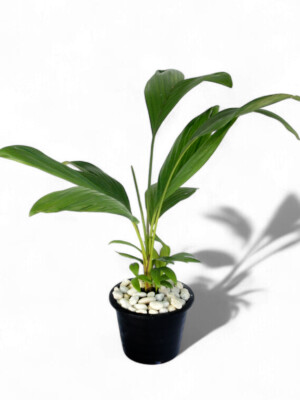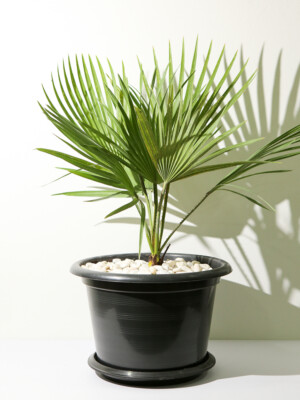Pot:
Ø16
Height:
60/80 (L)
Hardiness:
Not Hardy
Watering:
Low
Sunlight:
Low
Pot:
Ø16
Height:
60/80 (L)
Hardiness:
Not Hardy
Watering:
Low
Sunlight:
Low
$32.90
Share:
Product Overview:
How to Care for Your:
Salacca zalacca
Pot:
Available in pot sizes of Ø16cm.
Height:
Choose between 60/80 (L)cm. tall plants.
Hardiness:
Not Hardy
Watering:
Low
Sunlight:
Low
Pot:
Ø16
Height:
60/80 (L)
Hardiness:
Not Hardy
Watering:
Low
Sunlight:
Low
Salacca zalacca, commonly known as snake fruit or salak, is a distinctive species of palm native to Indonesia and Malaysia. This remarkable palm is primarily cultivated for its unique edible fruits, which have earned it significant cultural and economic importance throughout Southeast Asia.
The palm exhibits a clustering growth habit, typically growing to heights of 1-6 meters. Unlike many other palms, Salacca zalacca is characterized by its short or virtually absent trunk, with leaves emerging from near ground level. The leaves are pinnate and can reach lengths of up to 6 meters, creating a dense, bushy appearance. A notable feature is the presence of long, sharp spines on the leaf petioles and leaf sheaths, making the plant somewhat challenging to handle.
The fruit, which gives this palm its common name “snake fruit,” is particularly distinctive. Growing in clusters near the base of the palm, the fruits are roughly the size of a fig and are covered in reddish-brown scales that remarkably resemble snake skin in texture and appearance. Each fruit typically contains 2-3 lobes of white to creamy flesh surrounding inedible dark seeds. The flesh offers a unique combination of sweet and acidic flavors, often described as having notes of pineapple and apple, with a distinctive crisp texture.
Salacca zalacca is dioecious, meaning individual plants are either male or female, with both required for fruit production. The flowers are small and inconspicuous, emerging among the leaf bases. Female plants produce fruits that develop over several months before reaching maturity.
In cultivation, this palm species shows a preference for tropical conditions with high humidity and consistent moisture. It thrives in well-draining, organic-rich soils and performs best under partial shade, mimicking its natural understory habitat. The palm is particularly sensitive to cold temperatures and requires protection from frost.
Beyond its value as a fruit crop, Salacca zalacca holds cultural significance in its native regions, where it has been cultivated for generations. The fruit is commonly found in local markets and is increasingly being exported to international markets, where it is considered an exotic delicacy. Various cultivars have been developed, each with slightly different fruit characteristics in terms of size, flavor, and sweetness.
Related
Instagram Feeds




















